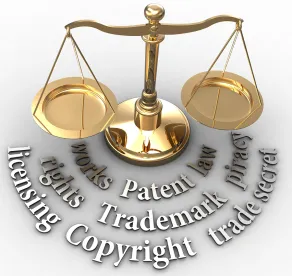In a recent patent infringement case relating to a method for diagnosing a neuro-muscular disorder, Judge Indira Talwani in the District of Massachusetts found the asserted patent claims to be patent ineligible because the claims were directed to a naturally occurring interaction. The case involved Athena Diagnostics and its licensees who sought to enforce U.S. Patent No. 7,267,820 (the “‘820 patent”) against Mayo Collaborative Services, LLC, d/b/a Mayo Medical Laboratories, and Mayo Clinic (“Mayo”). At the outset, Mayo moved to dismiss the complaint alleging that the ‘820 patent was patent-ineligible for applying well-known techniques to a law of nature.
35 U.S.C. §101 defines patent eligible subject matter: “Whoever invents or discovers any new and useful process, machine, manufacture, or composition of matter, or any new and useful improvement thereof, may obtain a patent therefor, subject to the conditions and requirements of this title.” The Supreme Court of the United States has carved out exceptions to patent eligible subject matter such as laws of nature, natural phenomena, and abstract ideas. See Diamond v. Chakrabarty, 447 U.S. 303, 303 (1980). The Supreme Court explained that determining patent eligibility under 35 U.S.C. §101 is a two-step process: 1) identifying whether the claims are directed to patent ineligible subject matter as defined in 35 U.S.C. §101; and if so (e.g., claims directed to laws of nature, natural phenomena, or abstract ideas), then 2) is there an “inventive concept” (e.g., does the invention require significantly more than the ineligible concept itself). See Mayo Collaborative Services v. Prometheus Laboratories, Inc., 566 U.S. 66, 72 (2012).
The ‘820 patent claims methods of diagnosing a neurotransmission or developmental disorder related to muscle specific tyrosine kinase (MuSK), a protein located at neuromuscular junctions. Athena found that subjects that have certain, difficult-to-diagnose neuromuscular conditions, such as Myasthenia Gravis, produce autoantibodies that bind the MuSK protein. Based on this observation, Athena developed a diagnostic assay to diagnose a neurotransmission or developmental disorder by detecting the presence of MuSK autoantibodies. This diagnostic method included 1) contacting a biological fluid sample with MuSK protein, and 2) detecting the presence of any autoantibody-MuSK complexes that have formed. Claim 7 of the ‘820 patent exemplifies how the detecting step works:
A method . . . comprising contacting MuSK . . . having a suitable label thereon, with said bodily fluid, immunoprecipitating any antibody/MuSK complex … from said bodily fluid and monitoring for said label . . . wherein the presence of said label is indicative of said mammal is suffering from said neurotransmission or developmental disorder related to . . . MuSK. (Emphasis added.)
Mayo’s motion to dismiss Athena’s complaint argued that the ‘820 patent claims were drawn to standard methods in the art that make use of laws of nature and are thus not patent eligible under 35 U.S.C. §101. Athena argued that because the patent claims at issue required the production and use of a labeled MuSK protein, a non-naturally occurring substance, the claims were patent eligible.
In its eligibility analysis of the ‘820 patent, the court ruled that the ‘820 patent was based on use of a non-naturally occurring compound (i.e., labeled MuSK protein). However, the court pointed out that that the claims were not drawn to the making of the labeled MuSK, but to the naturally occurring interaction between bodily fluid and the labeled MuSK. The court also found that the labeling techniques described in the ‘820 patent were routine. In view of its analysis, the court found the asserted patent claims patent ineligible.
The case is Athena Diagonistics, Inc. v. Mayo Collaborative Services, LLC, 15-CV-40075-IT, 2017 (D. Mass.), before Hon. Indira Talwani



 />i
/>i

